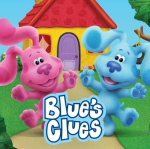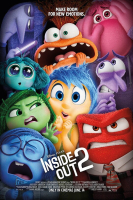Bluey
Discovering the world of Bluey was like stumbling upon a hidden gem in the vast ocean of children's programming. As a parent who's navigated the winding paths of cartoons and animations, Bluey stood out not just as a mere show but as an experience shared between my children and me. What’s truly remarkable about this Australian animated series is its ability to seamlessly bridge the gap between childlike wonder and adult introspection.
Bluey whisks us away to suburban Brisbane, weaving stories that are imaginative yet grounded, allowing both young and mature audiences to savor its subtle brilliance. The show follows a family of anthropomorphic dogs – Bluey, a six-year-old Blue Heeler, her four-year-old sister Bingo, and their parents, Chilli and Bandit. It embarks on episodes imbued with life’s lessons, making it an essential part of my family’s screen time.
The Genesis of Bluey
Bluey wasn't born from the traditional, predictable molds of children’s television. Its creator, Joe Brumm, envisioned a creation that mirrored his life and the simplicity he cherished in everyday moments with his daughters. While living in London during the early 2000s, Brumm honed his skills as an animator working on shows like "Charlie and Lola". It’s fascinating to think that during these years, seeds for Bluey were quietly germinating.
When Brumm returned to Brisbane in 2009, he was inspired to create a series that would encapsulate childhood play's fantastical world. He wanted to craft something akin to "Peppa Pig" but with distinct Australian flavors and authenticity. Brumm’s innovative approach was recognized by Ludo Studios, who aided in expanding Bluey’s realm from conceptual sketches to vibrant, lively episodes that first aired in Australia in 2018.
Characters That Resonate
The characters of Bluey are the soul of the series, each bringing a unique perspective and flavor that resonate beyond the roles of typical animated personas. Initially, I found myself drawn to Bluey herself, this curious and adventurous little pup whose perspective on life reminded me of my older daughter. Her world is full of small victories and learning moments that many children, including mine, can directly relate to.
Then there's Bandit, Bluey’s father. He is a character I initially admired, then felt challenged by. He effectively becomes a litmus test for my parenting; the way he engages with his children is both inspiring and humbling. Bandit is attentive, imaginative, and indefatigably present, attributes which make him the quintessential father figure in animation and also a source of introspection for many parents like me.
Social and Cultural Impact
The social commentary embedded within Bluey’s narratives is subtle but profound. On more than one occasion, I’ve found myself engaged in post-episode discussions with fellow parents about the many layers the show presents. Whether it's tackling themes of resilience, empathy, or cooperation, Bluey has become more than just children’s entertainment; it’s a conversational cornerstone for both societal and familial topics.
Moreover, Bluey’s cultural impact has transcended borders. Its authentic Australian roots are proudly showcased rather than hidden or adapted for global audiences. This embrace of identity speaks volumes and has helped initiate wider discussions on diversity in children's programming. It's refreshing to see a series that cherishes where it comes from and wears it proudly on its sleeve.
Sonic Atmosphere
One of Bluey’s underrated triumphs lies in its carefully crafted soundscape. The music in Bluey enhances every scene, capturing emotions in ways that dialogue alone cannot. As I sit with my children and we listen to Bluey’s musical cues, there is an undeniable connection bridging generations. The show features compositions that nod to classical pieces and modern scores alike, creating an environment both familiar and novel.
Each episode’s soundtrack, from the playful to the poignant, helps set the mood and tempo. My kids often hum these tunes days after watching, something that reminds me of the music's understated power to linger and inspire long after the episode has ended. This aspect is a testament to the creators' dedication to building an immersive world.
Visual Aesthetic
The visual style of Bluey is another facet that draws not only children but adults into its animated world. Its simplicity carries a deceptive depth, encouraging viewers to look beyond face value. The art style is both charming and direct, reminiscent of children's own playful drawings, yet infused with an understanding of design that keeps it engaging.
Often, while discussing the vibrant scenes with my children, I get a sense of empathy and understanding for the characters’ emotions visually represented. Colors are striking, invites everyone to linger a little longer on each frame, unraveling stories without the need for words. This visual language speaks volumes, enhancing the narrative in ways that scripts sometimes fall short.
The Themes of Play and Learning
One of Bluey’s monumental achievements is its unapologetic embrace of play. Play is celebrated as the main medium through which Bluey and her friends learn about the world. This aspect resonates deeply with my own philosophy of teaching, focusing on experiential and interactive learning processes. Bluey's episodes often present problems that children solve through imaginative play, a method I cherish and encourage at home.
Every story is an unfolding exploration of abstract and concrete lessons, whether it's counting, empathy, or the nuances of growing up. Watching Bluey with my children, I find myself not only a spectator but an active participant in the learning process. The show deftly combines play with lessons that feel organic and engaging, making educational content enjoyable for the whole family.
Reflections on Parenting
As a parent, my viewing of Bluey is not confined to seeing it as mere entertainment. It acts as a mirror reflecting my own parenting desires and aspirations. The seamless manner in which Bandit and Chilli engage with their offspring is both inspiring and, admittedly, at times intimidating. It challenges my notions of parental involvement and offers new perspectives on engagement.
Each episode quietly beckons me to elevate my own interactions, to find joy in the routine, and to perceive the miraculous in the mundane. Bluey, without didactic overtones, encourages introspection on what it means to truly be present for my children. It reinforces the idea that the best parenting moments often arise from the simplest, most genuine interactions.
Personal Impact and Realizations
Bluey, through its wonderfully crafted storytelling and art, has influenced me in unforeseen ways. Its influence extends beyond family time, intruding into my personal moments of reflection. I find myself contemplating its subtle messages during the quiet of the night, considering how its portrayals of family life compare with my own experiences.
As I interact with the series, I realize Bluey has taught me the value of embracing imperfections – both in myself and in the day-to-day spectacles of family life. It’s a gentle reminder that authenticity, kindness, and understanding offer far more than superficial perfection ever could.
Exploring New Narratives
What continues to keep Bluey fresh for both newcomers and veteran viewers like myself is its evolving narrative approach. The writers have skillfully woven new ideas and developments into each season, keeping the stories relevant and innovative. My family often eagerly awaits each new episode, pondering the different themes and journeys we will embark on.
Series like Bluey push creative boundaries and redefine what children’s stories can achieve. They set a standard in animated storytelling, showcasing the kind of narrative depth and empowerment that drives cultural progression. In more ways than one, it has opened my eyes to the diversity of storytelling that animation can deliver.
The Humor Element
A distinct feature of Bluey that sets it apart from other children’s shows is the humor interwoven throughout each episode. It’s a testament to the creators’ wit, appealing to both the innocent giggles of kids and the knowing laughter of adults. The humor is gentle yet clever, a rare quality in this genre.
There have been countless times that I found myself laughing along with my children during a Bluey episode, realizing that the writers intentionally included jokes that adults would appreciate without dulling the enchanting experience for younger viewers. This balancing act of humor is what keeps Bluey firmly stationed in the household viewing schedule.
Challenges of Representation
As much as I adore Bluey, it's crucial to discuss the challenges it faces in terms of representation. The series does bear a noticeable lack of diversity, casting a predominantly white character set. This aspect has sparked important discussions in various circles about inclusivity and representation in media aimed at young audiences.
However, the show has made strides in addressing these concerns and continues to evolve. It’s crucial, I believe, for it to continue embracing wider narratives and characters, allowing all children to see themselves in the joyous simplicity it portrays. Bluey has started on the right path and could indeed lead children’s programming towards a more inclusive direction.
Encouraging Quality Family Time
One of the most appreciated aspects of Bluey, from my perspective, is its ability to drive quality family time. Amid a world saturated with digital distractions, its episodes serve as cherished moments where my family and I come together, sharing laughter and thoughtful dialogues.
Whether analyzing each episode's underlying message or simply enjoying its humor, Bluey has become a component of our family's bonding experience. It has reinvigorated our perspective on screen time, transforming it from passive consumption into an active, shared experience.
Conclusion
As seasons pass and my children grow, Bluey remains a constant companion in our household. It’s animated heart and the thoughtfulness behind its narratives resonate far beyond its target demographic, offering insights and enjoyment to audiences of all ages. In my view, it’s more than just a show; it’s a cultural touchstone that defies the constraints of genre and age.
Bluey captivates, instructs, and charms with each episode. It encourages generations to play, learn, and reflect with equal vigor and joy. As I eagerly anticipate future seasons, I remain grateful for the depth and warmth Bluey has brought into our lives, leaving an indelible mark that’s sure to inspire future moments of wonder.
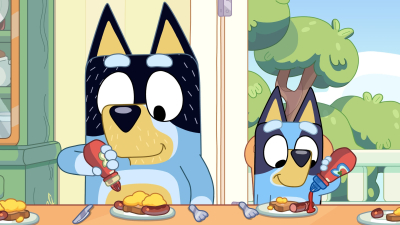
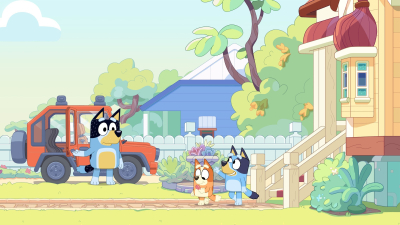

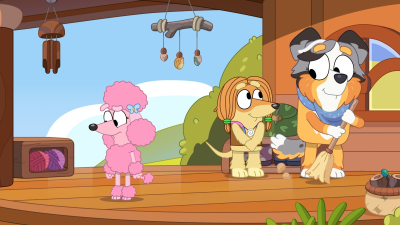
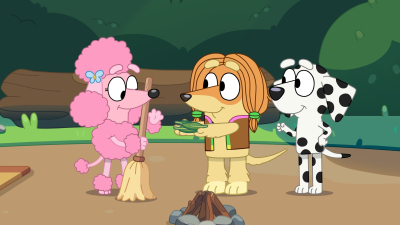
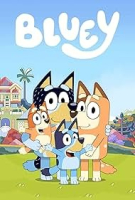
 How to watch
How to watch 






